Making a mas: Demystifying the blue devil
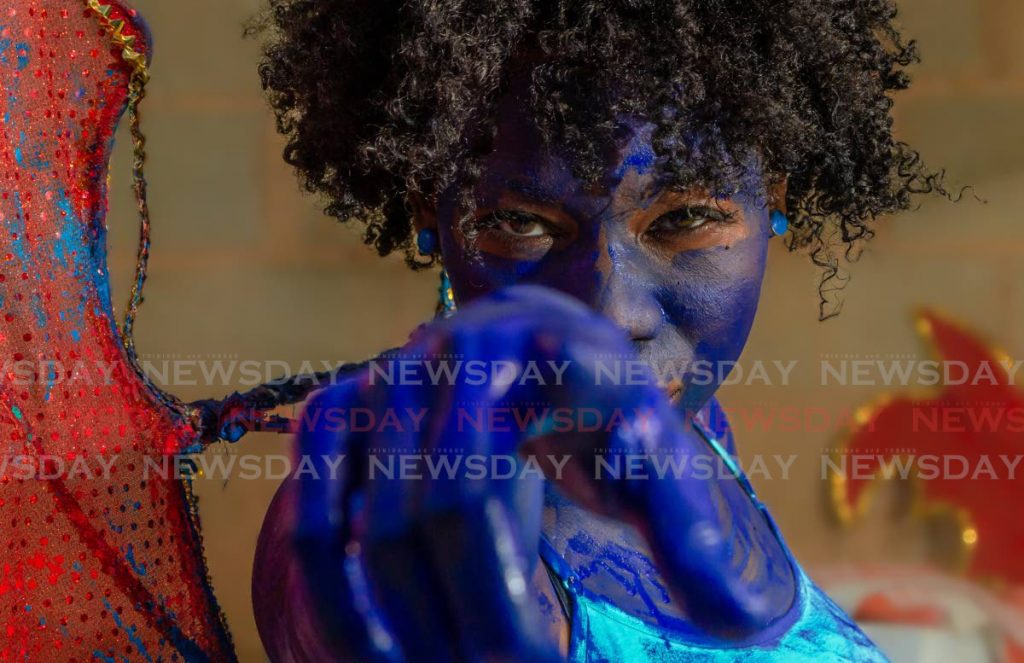
Over the next few weeks, journalist Kalifa Sarah Clyne will be telling immersive stories about Carnival and the people and characters responsible for parts of TT's biggest cultural export. From the transformation into a blue devil, to rising high with moko jumbies, the Newsday will share this close look at mas.
This week, the blue devil, featuring Next Level Devils from the hills of Paramin.
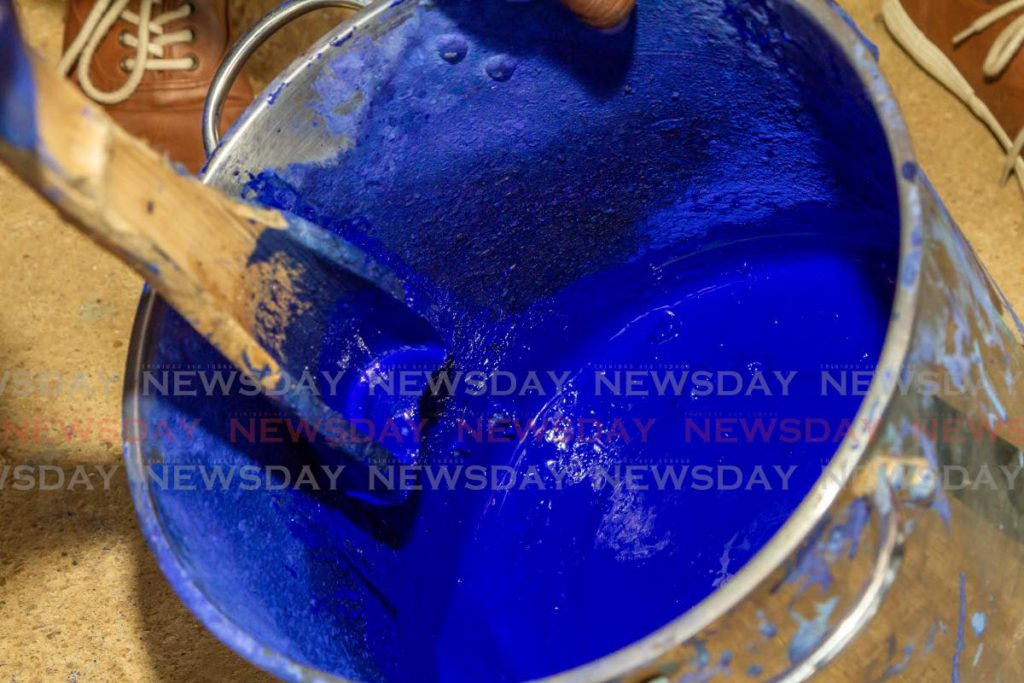
I'll never forget the moment I learnt what kerosene (pitch oil) tastes like. It was January 19, at dusk, on a hillside in Paramin.
And if I wanted to forget it, the smell of my burps the following day provided unwanted reminders.
Surrounded by men beating pans, screams piercing the night, I was barefoot and holding a lit pitchfork, my only source of light. I was determined to breathe fire like the baddest blue devil ever.
In reality, I felt I disappointed my kind instructors as my attitude and demeanour never quite reached the ferocity and intensity of a real blue devil.
I was blue devil lite.
Diet devil.
And that's if I am being generous.
The most beautiful and photogenic elements of being a blue devil, to me, happen to be the most dangerous.
In mythology when you think of a thing that breathes fire, you usually think of a large, flying dragon.
In Trinidad and Tobago culture, there are real, living fire-breathers with blue skin, sinewy horns and a red, bloody tongue that spits flames.
I think I first saw a blue devil on television in 1997, with the band 3canal. It was only in Form One, during one of my secondary school's yearly Carnival parties, that I learned to fear them. I remember seeing my screaming classmates scampering away from the courtyard, in the opposite direction from where I was headed.
I turned a corner and came face to face with terror. In my recollection, its eyes were bloody and it had sharp pointed teeth. Its skin was covered in a blue that looked liquid and its mouth was dripping with blood.
I quickly joined my classmates, running up the stairs so fast I tripped twice. I still have the scar.
Years later, every Carnival, when a blue devil approached, I ran.
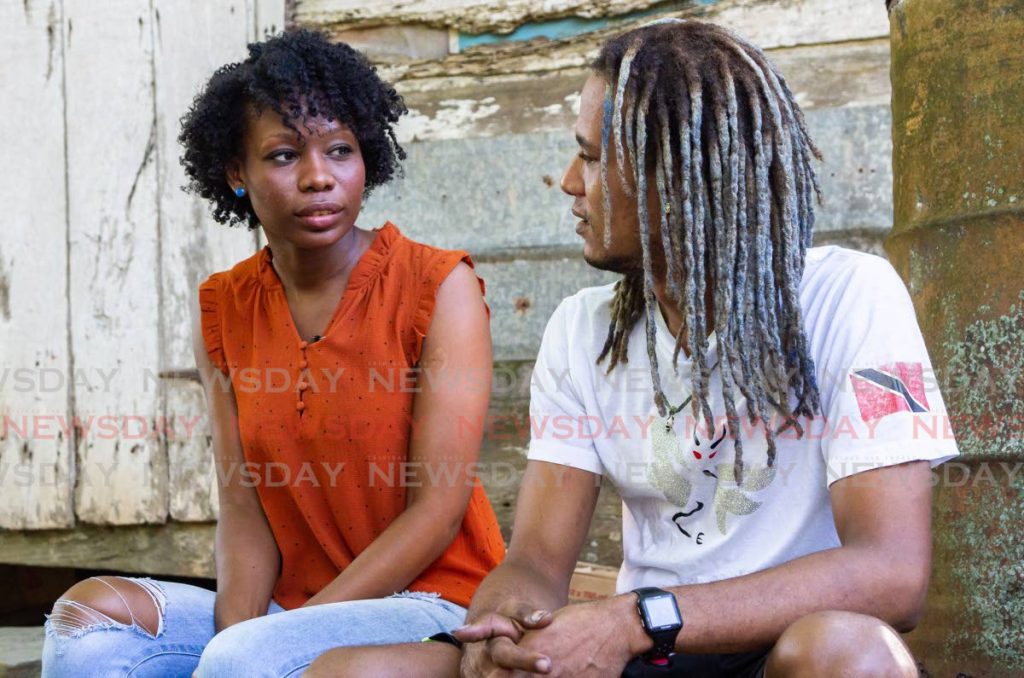
The Next Level Devils
Yet I found myself interviewing Sterlyn Pierre and Steffano Marcano, senior members of the Next Level Devils, a blue devil group from Paramin. I was also committed to letting them transform me into the character.
Marcano has played blue devils since he was a child, and Pierre, who used to be terrified of the character until his late teens, teaches children as young as three about a tradition popularised by their community.
A blue devil band can consist of three people and sometimes as large as 30, though Pierre and Marcano say the numbers are limited by the amount of blue available to paint themselves.
Blue devils can also be male or female and the Paramin community recognises Louann Boisson as the first female blue devil, which she played more than two decades ago.
Since then many women have started portraying the character.
Marcano said he remembers following blue devils around at the age of five when his friends would run inside. At seven he blew fire for the first time.
He considers blue devil portrayal an important part of his heritage.
“Blue devils in my community are on the level of patois, parang and planting chive. We love that it is our culture. It comes naturally to us,” Marcano explained. “It’s a torch that our elders handed down to us.”
Marcano said he was taught that portraying the blue devil character was mocking the devil, and disagreed with people who assumed the portrayal was satanic.
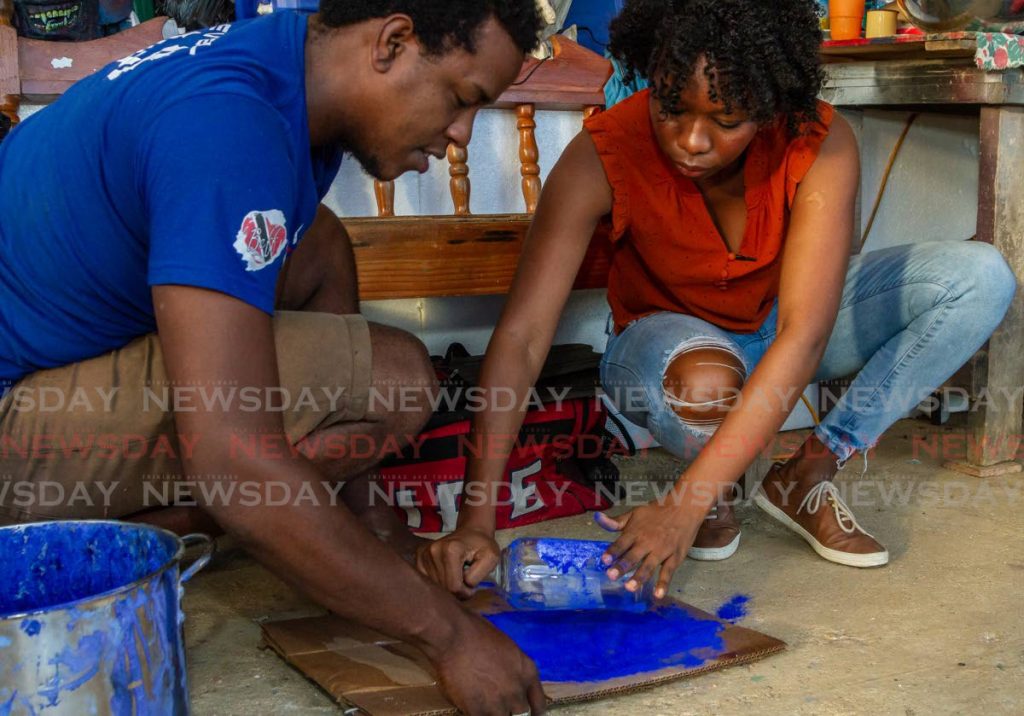
“No, we mock the devil. Our group prays before each performance.”
I asked Claire Woods, researcher at the Carnival Institute, about the history of blue devils. She said they fall into the category of devil mas and are a sub-group of jab molassie, which originated as far back as the 1800s.
Woods said devil mas was one of many ways former slaves mocked their masters, painting their bodies with molasses to make themselves even darker, at a time when people were punished for being black.
In Paramin, Woods said, the community started using washing blue to cover their bodies simply because it was easy to access.
"The thing about the Paramin people is that they popularised the blue devils. In my research, I have not come across a community that takes ownership of the blue devil in that way. It’s just Paramin.”
Becoming a blue devil
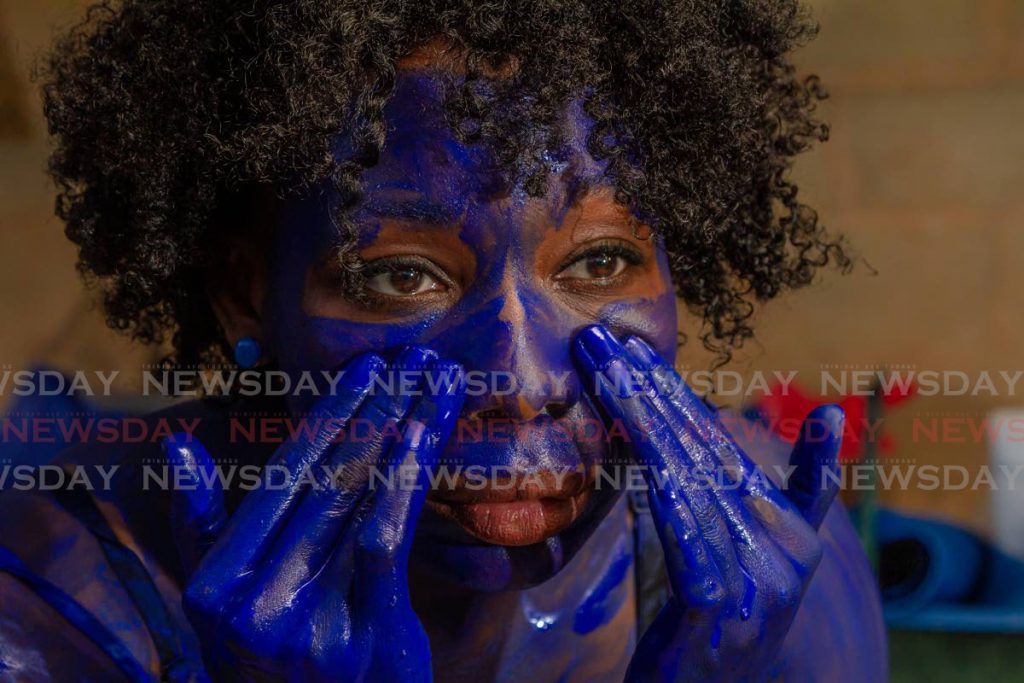
Pierre started by showing me how to mix the blue. I’d always assumed blue devils used paint, but the Paramin tradition started with crushing and mixing the Oxford blue (the same blue some people use to help their shirts stay white) into a thick liquid, then coating their bodies with it.
Mixing was a simple process: blue + hot water+ charcoal+ lard to make it stick. After mixing, we painted ourselves with the mixture, then added wings. Pierre had told me to walk with blue shorts and a blue top, which I changed into. He gave me a tail made of rope and tied another rope around my waist. He said the lead devil is tied, giving the idea that he or she needs to be held back. He gave me horns made of hardened cardboard held together with an elastic band, which I strapped to my head –and I was in full blue devil wear.
But wearing the costume does not a blue devil make. I mentioned the intensity earlier and I was encouraged to let my inner devil loose. Pierre also showed me some blue-devil dance moves, which involved skipping as though the ground was treacherous.
Unfortunately for all of us, my ability to channel my intense side fell short. One of the group commented that I could be a “jolly jab.” I liked that idea.
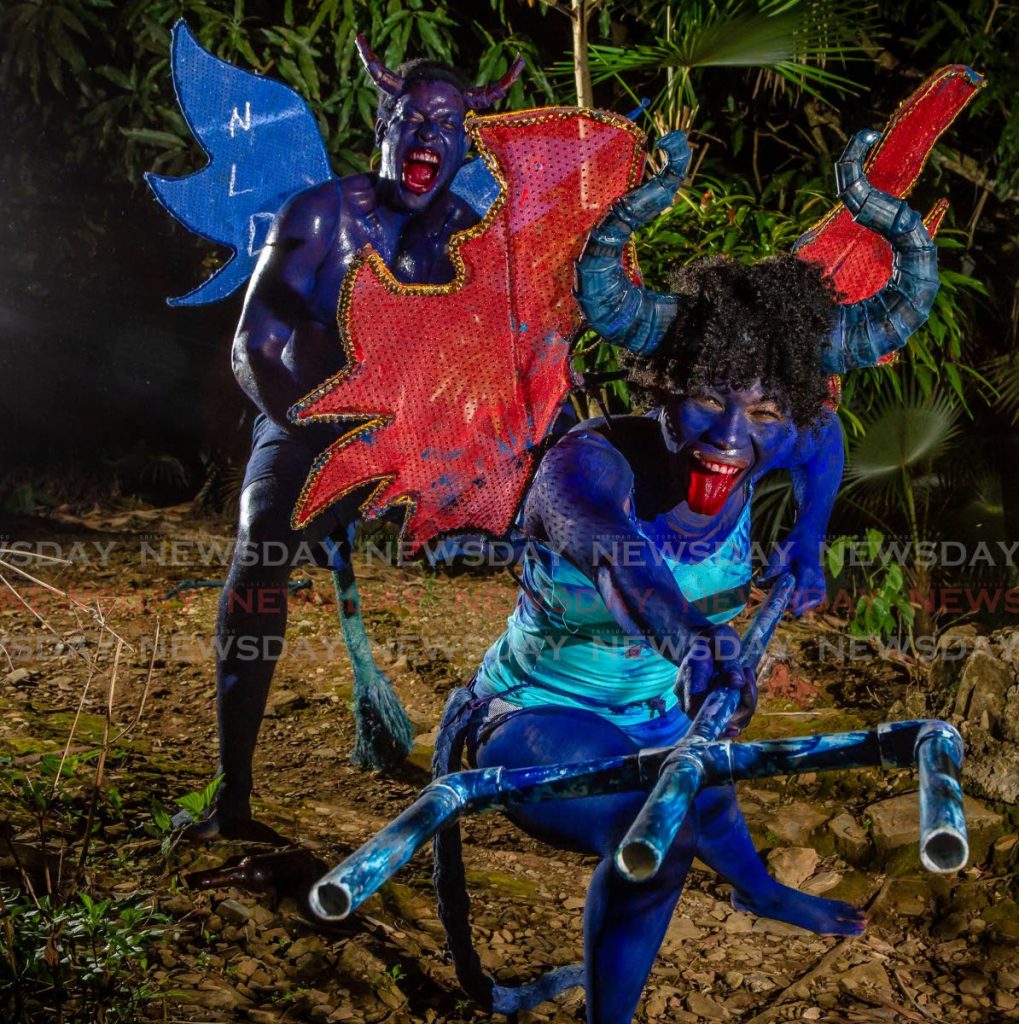
The group walked over to a side of the hill shaded by trees and beat a rhythm on Crix tins, which they tune to get a different sound. The tuning process is secret. I asked. They wouldn't tell. The sound is a traditional rhythm passed on through generations.
After giving me the final piece for my costume – food colouring to make my mouth look bloody – we started to dance the jab toward the players.
It was fun. I imagine it could be very liberating. I tried my best. There is video evidence that will be available on the Newsday website and social media pages next week. Be kind.
The final part of my blue devil initiation was definitely the part I was looking forward to the most. Marcano and Pierre both warned me that kerosene had a strange taste and I might want to spit it out immediately. They were right, but I resisted the impulse.
Before we got to the kerosene, though, Marcano had me practise using water. The first time I spat the water, it blew right back into my face.
That was lesson one: understand wind direction and work with it.
We practiced until I felt comfortable, which was when I could feel no more water droplets flying back at me. Only when I said I was ready did we move on to the flame.
I put the kerosene in my mouth, recoiling at the taste, and Pierre held a lit pitchfork in front of me. I took the pitchfork from him, wanting to fully commit to the exercise and spit the kerosene toward the flame.
The flame barely moved. Pierre and Marcano encouraged me to try again, telling me to use the same techniques they had taught me using the water.
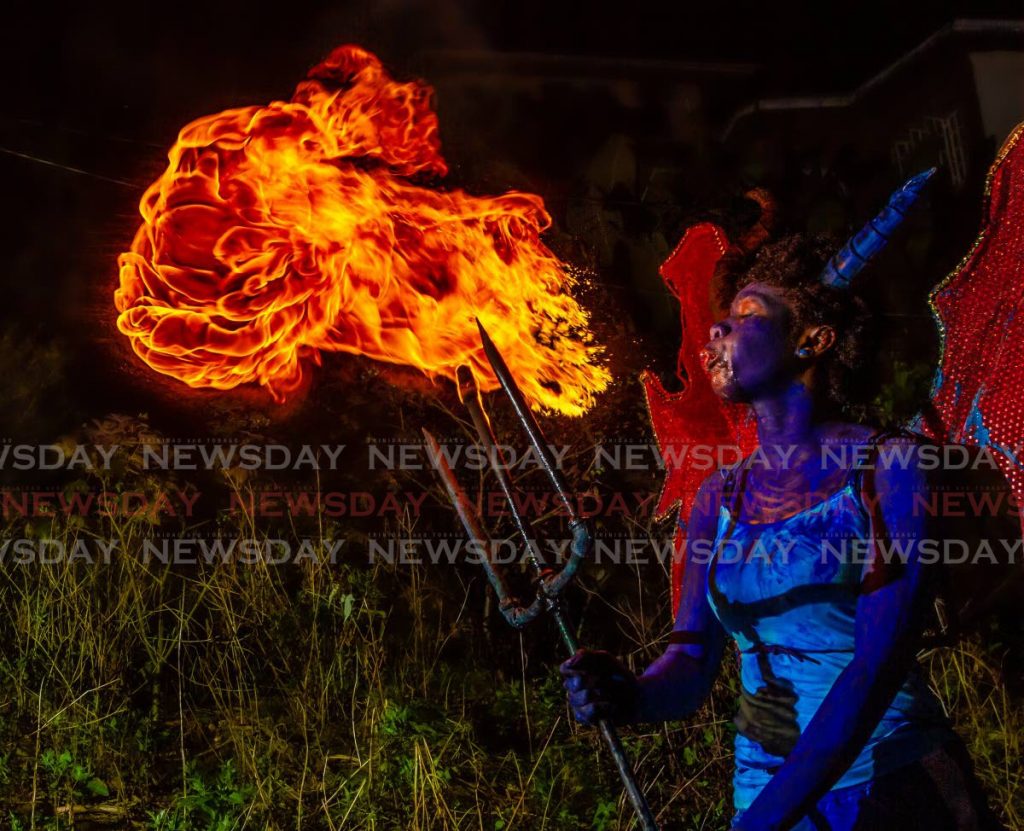
This time, I added more force and saw the flame grow outwards and upwards into the sky. I felt heat on my face and reflexively moved backward, away from it. I tried again, and again until my photographer got the perfect shot. Watching the fire grow before my eyes, knowing my efforts had created something so much larger than life, is a feeling I will forever treasure.
I was a bit wary of the kerosene dripping onto my face and mildly terrified that I would catch afire, but the group was reassuring.
After several more successful attempts, Marcano gave me water to wash my mouth and face, and congratulated me on becoming a blue devil, even if I was a jolly jab.
I know many people who have played mas, but sometimes we forget that elements of mas like blue devils, moko jumbies and more traditional characters aren't just to be watched and applauded.
Actually portraying this aspect of TT culture, to feel the flames and dance the jab, was eye-opening, beautiful, and yes, a little scary.

Comments
"Making a mas: Demystifying the blue devil"